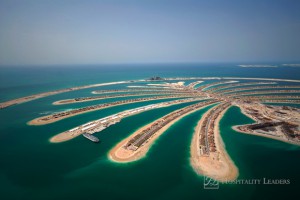
Jones Lang LaSalle, the world’s leading real estate investment and advisory firm, has released its Now in its seventh year of publication, this highly anticipated research assesses and forecasts the major trends that JLL anticipate are likely to impact and shape the UAE real estate sector over the next 12 months.
In the?2014 Top Trends report, Jones Lang LaSalle outlines the below key trends affecting the UAE real estate market this year.
- Avoiding another bubble:?With unsustainable price growth in the residential market, increasing cost pressures and return of speculative activity, there has been concern that Dubai will experience another bubble. However, JLL notes that there are many differences this time around that makes for a ?smarter? market.? Some of these differences are that investors are more cautious, regulations are better, and property development is changing with larger projects being phased in line with demand, less reliance on pre-sales and sub-developers and significant levels of new supply being provided.
- More measured mega developments:?For many of the differences identified above, mega projects that were either put on hold, significantly slowed or were not initiated during the financial crisis are a reality again because of growing confidence in the UAE?s market. The plans are more measured and there is an increased focus on phasing projects over many years in line with end user demand. In Dubai, these master-plan communities include Dubai Canal, Mohammad Bin Rashid and Dubai Waterfront. In Abu Dhabi, they include Saadiyat Island and Capital District, now known as Zayed City.
- Future directions of growth:?Dubai is growing towards the South with Dubai World Central, which includes the Expo 2020 site and Al Maktoum Airport, driving this trend. There is also a notable trend towards development closer to central Dubai, infilling some of the gaps left by the previous scattered development. Mohammed Bin Rashid City is a good example of this trend, incorporating many of the components originally envisaged for Dubailand. This is a key aspect of the recently approved Dubai Urban Planning framework. Abu Dhabi is also following a policy of concentrating development in a number of strategic locations identified in the city?s 2030 vision.
- Expo 2020 ? Important long term but limited impact in 2014:?While there was a lot of excitement building up to the successful bid for Expo 2020 at the end of 2013, JLL expects there will be limited direct impact in 2014 because there will only be limited activity this year. Over the long-term, Expo 2020 will have a positive impact on the UAE with hospitality, logistics and retail being the major winners. Both price expectations and excessive new supply will require careful management leading up to 2020.
- More varied approaches to funding real estate:?Rather than debt, JLL expects that equity will be a preferred funding approach in 2014. Pre-sales will remain important in the residential market and pre-leases and build-to-suit will be funding many new office projects. Sale and leasebacks, REITs and IPO?s and last mile financing will become increasingly popular options for funding as banks remain cautious to enter into new relationships. There may be some further IPO?s and bond issuances in 2014? but these are not expected to be widespread and to be limited to just a few major real estate players.
Click here to read more.

